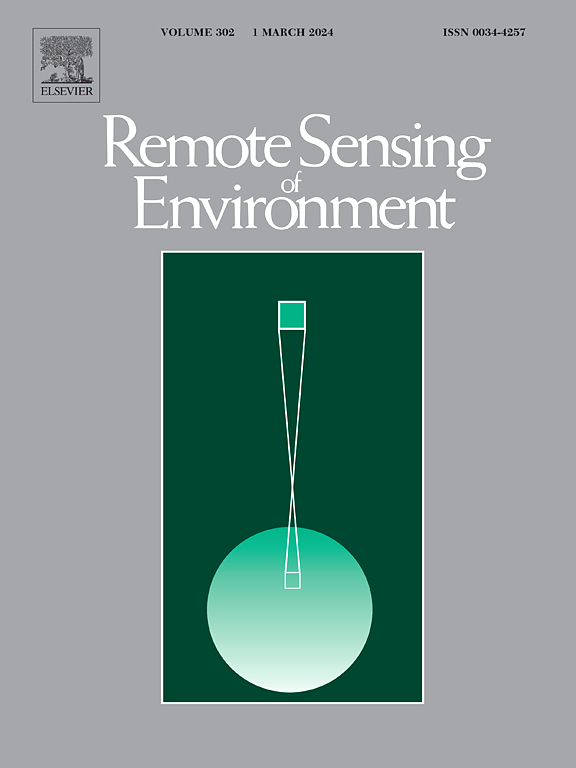Exploring spectral and phylogenetic diversity links with functional structure of aquatic plant communities
IF 11.1
1区 地球科学
Q1 ENVIRONMENTAL SCIENCES
引用次数: 0
Abstract
As freshwater ecosystems are threatened globally, the conservation of aquatic plant diversity is becoming a priority. In the last decade, remote sensing has opened up new opportunities to measure biodiversity, especially across terrestrial biomes, and the combination of spectral features with additional information derived from community phylogeny can further advance the accurate characterisation of plant functional diversity across scales. In this study, we explored the use of spectral features extracted from centimetre resolution hyperspectral imagery collected by a drone and phylogenetic metrics derived from a fully resolved supertree to estimate functional diversity (richness, divergence, and evenness) using non-linear parametric and machine learning models within communities of floating hydrophytes and helophytes sampled from different sites. Our results show that all three functional diversity metrics can be estimated from spectral features using machine learning models (random forest; R2 = 0.90–0.92), while parametric models perform worse (generalised additive models; R2 = 0.40–0.79), especially for community evenness. Merging phylogenetic and spectral features improves modelling performance for functional richness and divergence (R2 = 0.95–0.96) using machine learning, but only significantly benefits community evenness estimation when parametric models are used. The combination of imaging spectroscopy and phylogenetic analysis can provide a quantitative way to capture variability in plant communities across scales and gradients, to the benefit of ecologists focused on the study and monitoring of biodiversity and related processes.探索光谱和系统发育多样性与水生植物群落功能结构的联系
随着淡水生态系统在全球范围内受到威胁,水生植物多样性的保护正成为一个优先事项。在过去十年中,遥感为测量生物多样性开辟了新的机会,特别是在陆地生物群系之间,光谱特征与来自群落系统发育的附加信息的结合可以进一步推进跨尺度植物功能多样性的准确表征。在这项研究中,我们探索了从无人机收集的厘米分辨率高光谱图像中提取的光谱特征和从全分辨率超树中获得的系统发育指标,利用非线性参数和机器学习模型,在不同地点取样的漂浮水生植物和沼生植物群落中估计功能多样性(丰富度、散度和均匀度)。我们的研究结果表明,所有三个功能多样性指标都可以使用机器学习模型(随机森林;R2 = 0.90-0.92),而参数模型表现较差(广义加性模型;R2 = 0.40-0.79),尤其是群落均匀度。使用机器学习合并系统发育和光谱特征可以提高功能丰富度和散度(R2 = 0.95-0.96)的建模性能,但仅在使用参数模型时才显著有利于群落均匀性估计。成像光谱与系统发育分析的结合可以提供一种定量的方法来捕捉植物群落跨尺度和梯度的变异,有利于生态学家对生物多样性及其相关过程的研究和监测。
本文章由计算机程序翻译,如有差异,请以英文原文为准。
求助全文
约1分钟内获得全文
求助全文
来源期刊

Remote Sensing of Environment
环境科学-成像科学与照相技术
CiteScore
25.10
自引率
8.90%
发文量
455
审稿时长
53 days
期刊介绍:
Remote Sensing of Environment (RSE) serves the Earth observation community by disseminating results on the theory, science, applications, and technology that contribute to advancing the field of remote sensing. With a thoroughly interdisciplinary approach, RSE encompasses terrestrial, oceanic, and atmospheric sensing.
The journal emphasizes biophysical and quantitative approaches to remote sensing at local to global scales, covering a diverse range of applications and techniques.
RSE serves as a vital platform for the exchange of knowledge and advancements in the dynamic field of remote sensing.
 求助内容:
求助内容: 应助结果提醒方式:
应助结果提醒方式:


